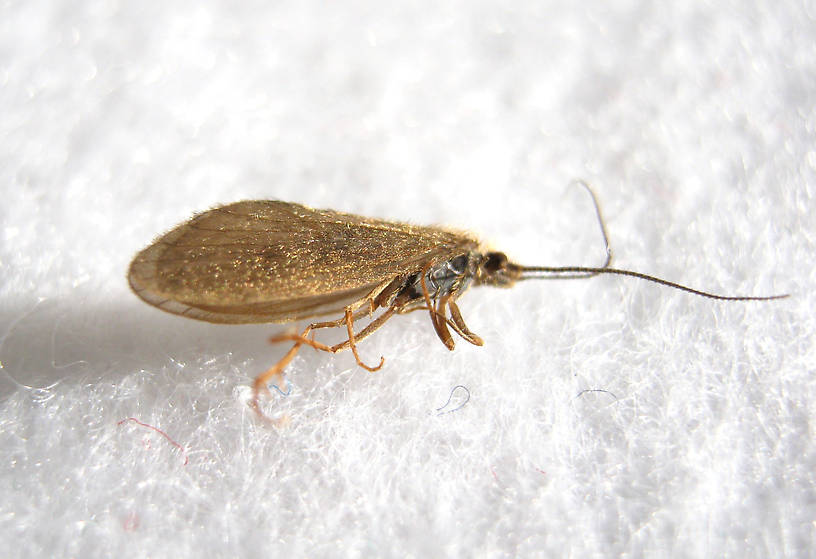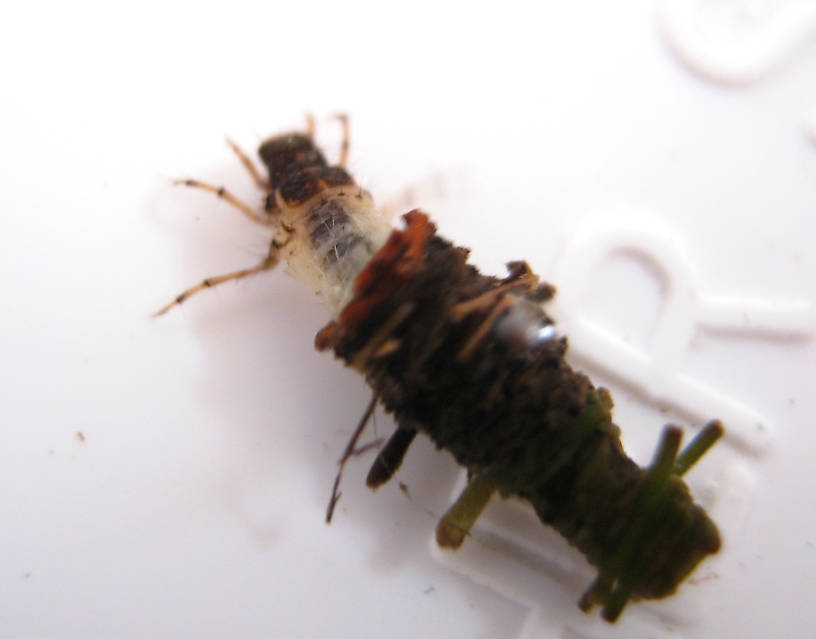
Hex Mayflies
Hexagenia limbata
The famous nocturnal Hex hatch of the Midwest (and a few other lucky locations) stirs to the surface mythically large brown trout that only touch streamers for the rest of the year.
Featured on the forum

This species was fairly abundant in a February sample of the upper Yakima.

Troutnut is a project started in 2003 by salmonid ecologist Jason "Troutnut" Neuswanger to help anglers and
fly tyers unabashedly embrace the entomological side of the sport. Learn more about Troutnut or
support the project for an enhanced experience here.
Little Gray Sedges
Like most common names,"Little Gray Sedge" can refer to more than one taxon. They're previewed below, along with 2 specimens. For more detail click through to the scientific names.
Caddisfly Genus Goera
These are often called Little Gray Sedges.
Caddisfly Genus Lepidostoma
These are very rarely called Little Gray Sedges.
This genus is important for trout anglers. Many species of Lepidostoma produce excellent hatches, especially in the West. Lepidostoma can be very prolific in spring creek environments or smaller runoff streams with springs. Lepidostoma togatum is the most important species of this genus in the East and Midwest. The West has several species that are important.

These specimens are still alive, just very cold, so the colors are accurate. I put them in the freezer for a bit to settle them down and overdid it a little:)

The photo of the specimen cased is alive. The photo of the uncased larva is the same specimen taken after it was preserved in its case. Unfortunately, there was a lot of pigment transfer making the specimen look olivaceous. In life it was grayish white as shown in the first photo.
See 7 more specimens...

